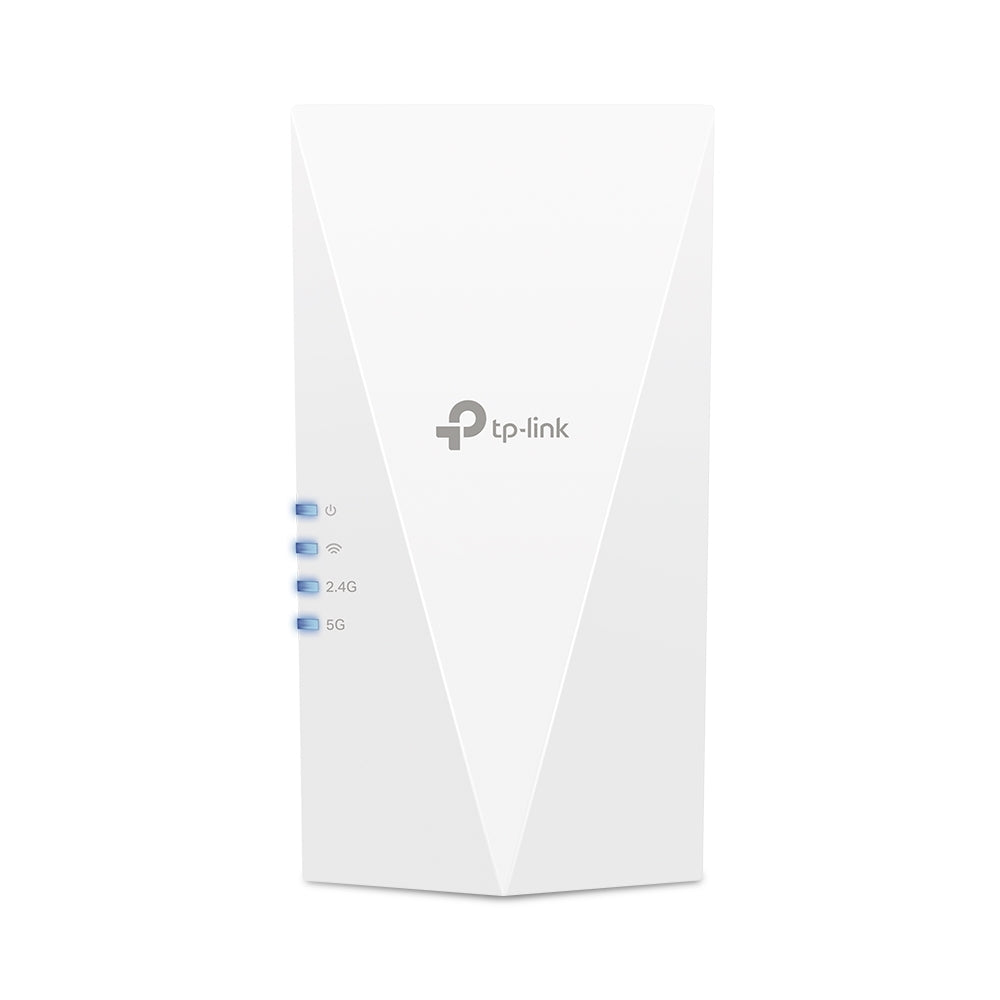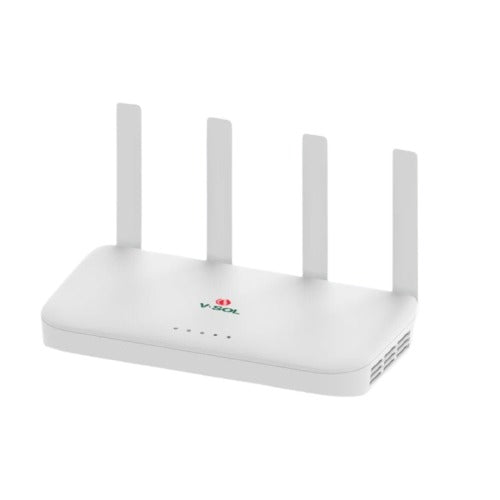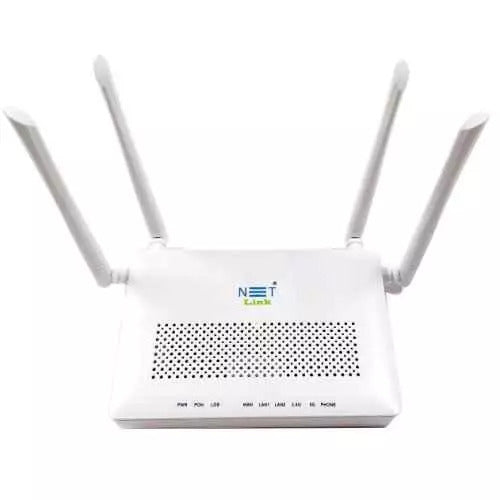
Wi-Fi 7 router - What new features will bring to the table?
Wi-Fi technology has evolved since 1997. Almost all our lives revolve around the Internet. Our growing needs a Wi-Fi 7 router. As we stream ultra-high-definition video, use cloud computing services, and connect ever more smart home devices, having a fast and reliable wireless network is no longer a luxury but a necessity.
So what new capabilities will Wi-Fi 7 enable? Would it be faster than even the best Wi-Fi 6 routers in use today? As wireless technology advances, speed, range, and connectivity improve, starting with 802.11b and ending with 802.11ax. A new era of lightning-fast wireless performance is coming with Wi-Fi 7 (802.11be). With data rates reaching up to 30 Gbps, Wi-Fi 7 promises to be the biggest leap yet for Wi-Fi routers and devices.Compared to previous generations
|
Features |
Wi-Fi 6 |
Wi-Fi 6E |
Wi-Fi 7 |
|
IEEE Standard |
802.11ax |
802.11ax |
802.11be |
|
Release Year |
2019 |
2021 |
2024 (expected) |
|
Frequency Bands |
2.4GHz, 5GHz |
2.4GHz, 5GHz, 6GHz |
2.4GHz, 5GHz, 6GHz |
|
Max Channel Width |
160MHz |
160MHz |
320MHz |
|
Max Data Rate |
9.6Gbps |
9.6Gbps |
46Gbps |
|
Modulation |
1024-QAM |
1024-QAM |
4096-QAM |
|
Latency |
25-35ms |
Less than 25ms |
Less than 1ms |
|
Spatial Streams |
8 |
8 |
16 |
|
MU-MIMO |
8x8 |
8x8 |
16x16 |
|
Security |
WPA2/WPA3 |
WPA2/WPA3 |
Enhanced WPA3 |
|
Key Features |
OFDMA, TWT |
Adds 6GHz band |
MLO, MRU OFDMA |
What's new in Wi-Fi 7 router?
Wi-Fi Technology has taken off for two decades. The upcoming Wi-Fi 7 standard promises to deliver the next jump in wireless capabilities. But what exactly is new and revolutionary about Wi-Fi 7 compared to previous generations?
Wi-Fi 7 routers offer faster speeds
The most attention-grabbing improvement Wi-Fi 7 provides is raw speed. Wi-Fi 7 supports fast peak data rates up to 46 Gbps, a huge leap over Wi-Fi 6’s maximum of 9.6 Gbps. Real-world speeds will be lower, but still a dramatic upgrade. Despite Wi-Fi 6 providing 37% faster speeds, it does not outweigh Wi-Fi 5's 10-fold increase. Throughput on Wi-Fi 7 is 480% higher than on previous generations. How does Wi-Fi 7 pull this off? A multi-gigabit wireless performance comes from several technical enhancements.

Wifi 6 vs wifi 7
- By using 320MHz wide channels in the 6GHz band in combination with 4096-QAM, Wi-Fi 7 push speeds up to 2.4 times faster than even 160MHz Wi-Fi 6 connections. It allows for the simultaneous transmission of more data.
- It implements 4K QAM modulation that encodes more data bits per transmission.
- Together, these boost the speed of individual links. But there’s more! Wi-Fi 7 also unlocks extra capacity through multi-band, multi-channel operation.
- With Multi-Link Operation (MLO), Wi-Fi 7 combines many channels across 2.4GHz, 5GHz, and the new 6GHz bands. This multilink aggregation joins two, three, or more channels to function as one high-speed link.
- By pooling together capacity across bands, Wi-Fi 7 routers achieve astonishing wireless speeds of over 10 Gbps, or even up to a theoretical 40 Gbps. Video streaming in 8K is now possible wireless.
Smaller footprint and whole-home coverage
Thanks to advanced antenna and signal processing techniques, Wi-Fi 7 wireless routers can provide up to 3,500 square feet of coverage with a compact, stylish footprint. A single base station provides fast, reliable wireless to your home without bulky routers or mesh units. The broad 360-degree signal reach provides Wi-Fi 7 speeds in the farthest corners and outside. A central router connects the garage, backyard patio, and other areas. No dead zones!
Next-gen entertainment experiences
With its combination of multi-gigabit throughput and near-instant latency, Wi-Fi 7 unlocks next-generation entertainment experiences:
- 8K Streaming - Wirelessly cast or stream 8K HDR content to smart TVs
- Cloud Gaming - Play console-quality games on any device over the cloud
- VR/AR - Immerse in virtual worlds with wireless headsets
- Video calls - Flawless 4K video chats with no lag or interruptions
Wi-Fi 7 provides the wireless foundation for the most demanding applications and richest media experiences. Entertainment is fast, immersive, and untethered.
Ultra-low latency
While tremendous top-line speeds grab the headlines, so do the latency improvements Wi-Fi 7 provides. It measures how long data takes to reach point A from point B. Lower latency results in much more responsive applications and interconnectivity. Wi-Fi 7 achieves lower latency through key innovations like Multi-Resource Unit (MRU) OFDMA and multi-link operation (MLO). MRU OFDMA allows the router to split wide bandwidth channels into smaller sub-channels and divide them between devices based on need. It prevents bandwidth-hungry applications from saturating the connection and lagging everything else out.

Multi-Layer Operation
MLO provides up to four parallel data streams, so in congested environments, the router shifts devices between links to maintain optimal throughput. This multi-stream operation reduces latency metrics by at least 30% compared to Wi-Fi 6 10-15 milliseconds and boosts wireless network capacity. For applications like gaming, VR/AR, video conferencing, and remote desktop access, milliseconds count. Wi-Fi 7's latency optimizations almost drop any lag users experience on a well-designed network.
Expanded network capacity
Also, to higher throughput per device, Wi-Fi 7 boosts network capacity to serve more devices. With its 320 MHz channels and Multi-Link Operation, Wi-Fi 7 deliver up to 5x the total network capacity of Wi-Fi 6. More users and devices connect without congestion or airtime contention issues. Wi-Fi 7 does this through more efficient scheduling. Using OFDMA and 16×16 MU-MIMO, Wi-Fi 7 routers communicate with many devices in parallel rather than. Environments with high demand enjoy this increased capacity. It will support up to 33 Gbps of speed and 200 simultaneous connections, even in data-intensive scenarios. Suitable for home and office.
6GHz spectrum and wider channels
A component enabling these speed and latency gains is the available 6GHz spectrum. Unlike the utilized 2.4GHz and 5GHz bands most existing Wi-Fi relies on, the 6GHz band offers a huge swath of clean, interference-free airwaves perfect for wireless data transmission. Wi-Fi 7 access up to seven more 160 MHz channels in the 6GHz band. It increases the total bandwidth available for devices to share. Congestion decreases as dozens of devices communicate without competing for the same overcrowded frequencies. The effectiveness of 320MHz channels at 6GHz also boosts speed and reduces latency. Previous Wi-Fi generations maxed out at 160MHz channel width, so Wi-Fi 7 doubles this available pipeline capacity. More data flow with fewer slowdowns. When you add Multi-Link Operation on top of these wide 6GHz channels, the stage is set for Wi-Fi 7 to deliver on its lightning speed and low latency promises.
Enhanced security for Wi-Fi 7 router
Of course, more speed and bandwidth need air-tight security to prevent misuse. Wi-Fi 7 implements the very latest WPA3 standard with 128-bit encryption and Simultaneous Authentication of Equals (SAE) technology. Enhances brute-force password protection. Wi-Fi 7 routers will also feature built-in VPNs to encrypt all data and block unwanted eyes from prying into your network traffic. The 6GHz band offers inherent security since older devices without Wi-Fi 7 compatibility can't access or interfere with it. Wi-Fi Alliance also requires new Wi-Fi 7 devices to support Protected Management Frames to resist de-authentication attacks. Wireless authentication and improvements in encryption.
Smooth backward compatibility
A key focus of the Wi-Fi 7 standard is ensuring backward compatibility with the billions of Wi-Fi 6 or 5 devices already in use. Wi-Fi 7 routers will use 6GHz for the fastest possible throughput while also supporting 2.4GHz and 5GHz for legacy devices. Technologies like Multi-Resource Unit OFDMA allow Wi-Fi 7 routers to distribute bandwidth among new and existing devices. You don't have to replace all your gadgets and computers to reap the advantages Wi-Fi 7 provides. New routers will shift devices between frequency bands and wireless links to provide the best experience. Of course, you will need Wi-Fi 7capable devices like phones, laptops, and TVs to enjoy the crazy 30Gbps speeds, but the network will still work great for your older devices.

When is Wi-Fi 7 router coming?
Wi-Fi 7 aims to deliver all these sought-after upgrades. So when do we get our hands on Wi-Fi 7 routers and devices? The Wi-Fi Alliance unveiled certification program details in early 2023. Cycle 1 of the program focuses on the core technologies, while later cycles will finish multi-link and 6 GHz operation. Broadcom, MediaTek, Qualcomm, and Intel are each developing Wi-Fi 7 chips. We should begin seeing the first Wi-Fi 7 products introduced in 2024.
Furthermore, TP-Link (Archer BE800 Wi-Fi 7 router), Arris (SURFboard G54 Wi-Fi 7 Cable Modem), and Netgear (Nighthawk BE19000 Wi-Fi 7 Router RS700) have launched their best wifi 7 router. These brand features are also listed above. Mass adoption is still a couple of years out as the new standard makes its way into phones, laptops, and other devices. But early adopters will enjoy Wi-Fi 7 routers in 2024, with volumes picking up in 2025 and beyond. The ecosystem will need time to mature and costs to decrease. Wi-Fi 7 improves wireless connectivity speed, latency, and capacity over the long term.
Conclusion
While a few years will pass before the cost of Wi-Fi 7 routers and devices decreases, the benefits will speed up wireless capabilities into new territory. Like the transition from dial-up modems to broadband, Wi-Fi 7 transforms our connected experiences.


















